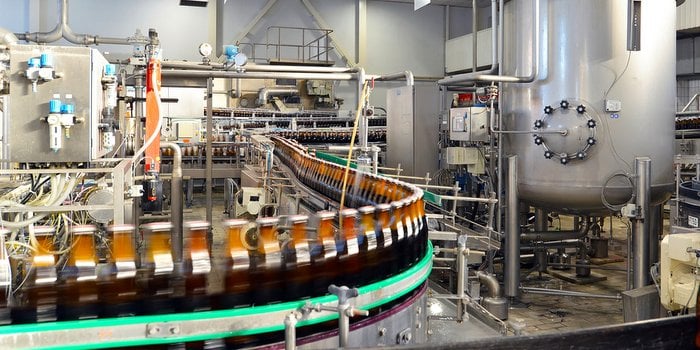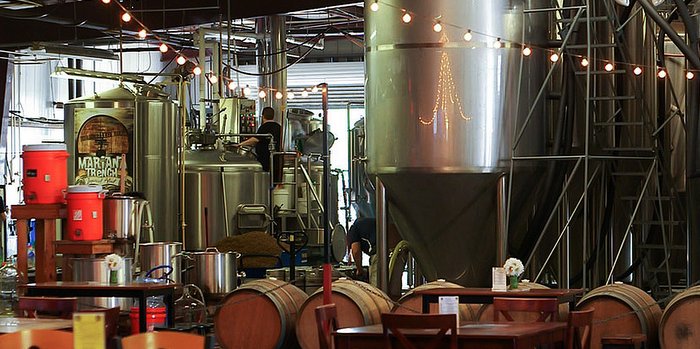
Not a newsflash: Craft beer competition is fierce, and there are no miracle recipes for success. Some breweries are expanding via new taprooms instead of tap handles. Others are putting the entire concept of outside sales into question.
Mid-sized brewers might have it the toughest of all, feeling price pressure by the largest national breweries who command shelf space with lower prices but also feeling margin compression by the smaller up-and-coming craft brewers capturing market share in the high margin segment.
For these mid-sized breweries, the challenge in maintaining a competitive business plan today is not only about how to grow top line sales but also finding ways to combat the margin pressure by trimming 5 to 10 percent of the cost off their production facilities without spending another million dollars in additional equipment.
This is where the industrial internet of things (IoT) can help, and we reached out to Altizon to find out how.
Who (what) is Altizon?
Altizon is a seven-year-old tech company that specializes in taking not-so-smart pieces of equipment and making them smarter. Their highly scalable cloud platform is used in a wide range of industries from pharmaceuticals to automotive, and now they have set their internet of things wizardry on mid-sized craft breweries (in the 10,000 to 50,000+ bbls a year range).
“We’re an Industrial IoT company, so our platform connects machines, people and processes, giving businesses the power to analyze real-time data and drive digital transformation by integrating IIoT into their business intelligence applications,” said Tyson King, vice president of sales for North America, Altizon.
Tyson said their product suite Datonis stands out from the competition by removing all manual data entry and by having a fully customizable, flexible solution that is not tied strictly to brewing (we’ll get into why that’s a good thing). They are also completely focused on production and not enterprise resource management.
The idea is to be more efficient in your process and your existing capacity to, hopefully, achieve even more out of that same capacity.
“A lot of customers have said ‘Oh my gosh, I still have to walk around with pen and paper,’” King noted, who visited his first Great American Beer Festival back in October this year to gauge what breweries would need out of such a solution. “Ultimately, it all comes back to productivity. They can see potential bottlenecks in their processes. Over time, with our analytics tools, we’ve seen breweries being able to turn what had always been a 24-day batch of beer into 16 days.”
We’ll start with the basics of how this “industrial internet of things” works and then dive deeper into why this might be interesting for your brewery.
Industrial IoT explained

Altizon’s tech pulls data from the basic computers inside any piece of equipment (in a brewery that could be a fermentation tank, a kettle or a bottling machine) and puts it all in one place. This way anyone from the operators to the owners can have real-time (or historical) access to the comings and goings of production. As long as the machines are tied to an external internet network of some sort, there’s no additional equipment required. If you’re not running an internal network, a systems integrator just needs to run a cable and connect a few devices.
Cool, so what happens next?
These formerly-basic-now-savvy pieces of equipment are now capable of much more. Problems are spotted in an instant. Predictability increases. Areas for improvement emerge.
“Between cost optimization with productivity and with predictability, it builds confidence for the distributors for repeat business,” King said. “Those are the two big areas that we’re seeing that are specific to the craft brewers. Two specific areas that they’ve benefited from.”
Catching failures before they become bad batches. Remember when that temperature sensor went bad and ruined the entire batch without you knowing? This comes back to predictability too. Distribution partners can be better assured they won’t be caught off guard by the unexpected surprise that a batch went bad.
What if I don’t know what to look for?
All of that data at your fingertips is powerful in ways you might not even realize. Areas you felt were just fine suddenly show potential for improvement. But all of that data can also be daunting. Where do you even start?
This is an area that sets Altizon apart. They are not just a technology provider so much as a data service and business consultant. They are just now getting into craft beer, but that outsider perspective can help them ask questions and hunt for data points that beer and brewing veterans might not. Breweries can work with the company’s business value realization (BVR) team to get deeper into understanding what your processes are intended for and what new analytics can be built to make those more efficient.
You can request any customization you’d like to see as well, like integrating your inventory management software.
Examples!
One example is sending an alert when temperatures start to trend up too high in the fermentation tank, and then that alert directs someone specifically to go in and take action to do whatever they have to do.
“Another area is in testing gravity levels,” King said. “You’ve got your original gravity and then your final gravity. Customers report situations where they saw the gravity plateau, but under normal operating procedures it took four days until they were finally comfortable with the results. Well that’s just an awfully long time to let your beer just sit there, right? By using our data and our analytics, we did a trend analysis over time and could see that history has shown you don’t need four days, rather only four hours before a plateau in the gravity. I think this is an area we can continue to work with folks on.”
Once these process improvements are put in place and brew times and batches are optimized, you can start to do more in-depth and accurate cost comparisons of your beers. Which ones are the most profitable, not just based on ingredients and sales but including the time it took in the fermenter? How much time did it take you to get it from day one to out the door?
“You can start making decisions about which beers you actually want to focus on and by which months they proved to be the most profitable for you — without needing the old spreadsheets and pen and paper.”
In the end, Altizon hopes to take the industrial smarts and efficiency of a Budweiser and put in a tool that is sized and priced for craft breweries. As King concluded:
“There’s a lesson to take away from some very large industries and companies who rely heavily on technology to streamline operations. We can bring that area of expertise from a technology standpoint to craft brewers. This is how mid-sized craft brewers can solve their challenge of margin-pressure by using proven technology to reduce their cost of producing quality beer. I think that will help them punch through the glass ceiling. At least that’s my hope.”





[…] NA Sales Tyson King spoke to Craft Brewing Business and shared how Altizon plans to take the industrial smarts and efficiency of a Budweiser and put it […]